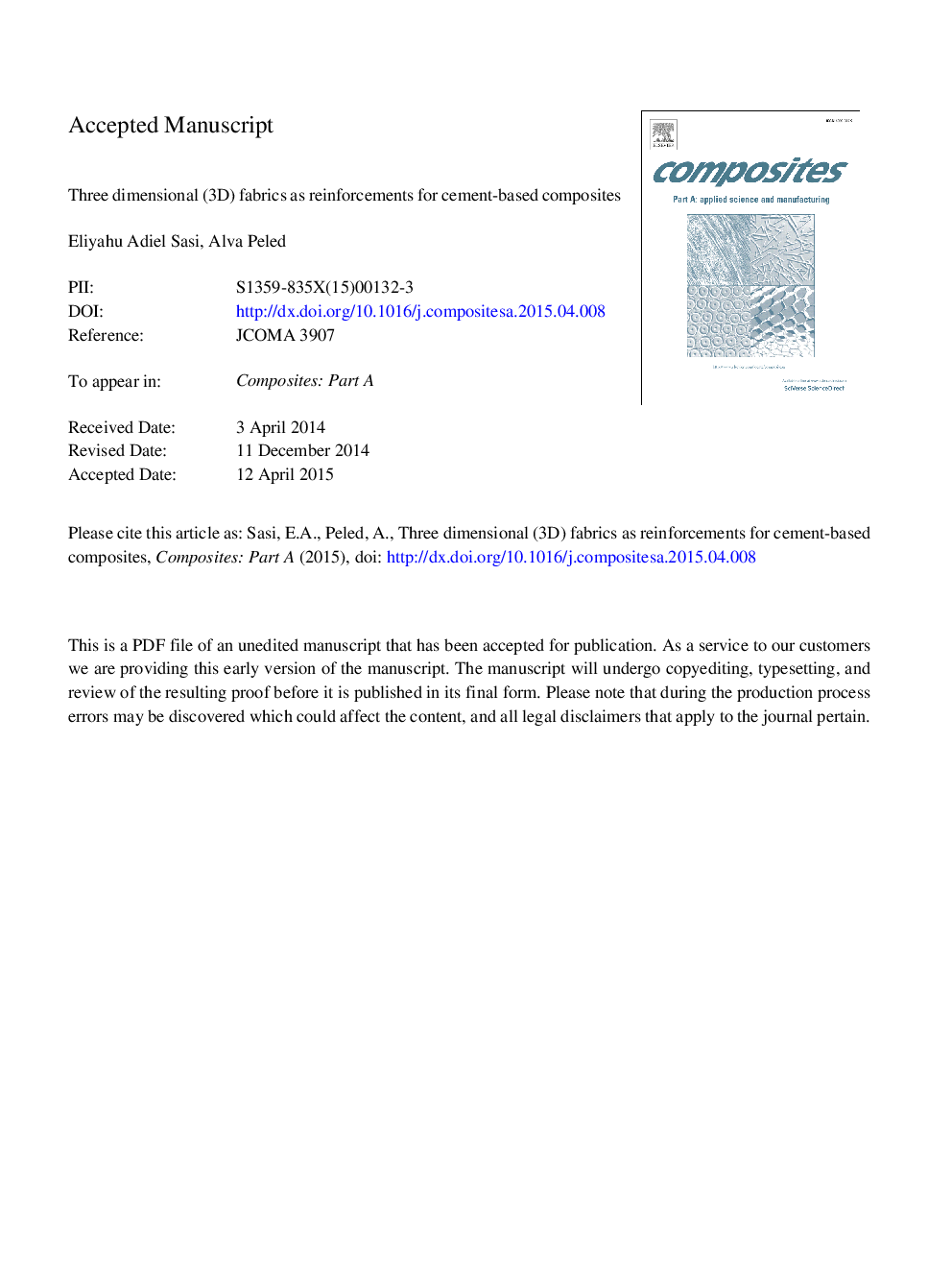| Article ID | Journal | Published Year | Pages | File Type |
|---|---|---|---|---|
| 7891806 | Composites Part A: Applied Science and Manufacturing | 2015 | 33 Pages |
Abstract
This research studied the flexural behavior of cement-based elements reinforced with 3D fabrics. The effects of the through-thickness (Z direction) yarns were examined in terms of four parameters: (i) yarn properties, (ii) varying the composite content of (i.e., coverage by) high-performance aramid yarn, (iii) treatment of the fabric with epoxy, and (iv) 2D and 3D fabric composites were compared. Overall, the 3D fabric composites performed better than the 2D fabric composites, which tended to delaminate. Our results indicate that even though the Z yarns are not oriented in the direction of the applied loads, 3D fabrics still have potential applications as reinforcements for cement-based composites. Indeed, the Z yarns hold the entire fabric together, which leads to improved mechanical anchoring and mechanical properties particularly when the fabric has been treated with epoxy, i.e., to create a stiff reinforcing unit.
Related Topics
Physical Sciences and Engineering
Materials Science
Ceramics and Composites
Authors
Eliyahu Adiel Sasi, Alva Peled,
